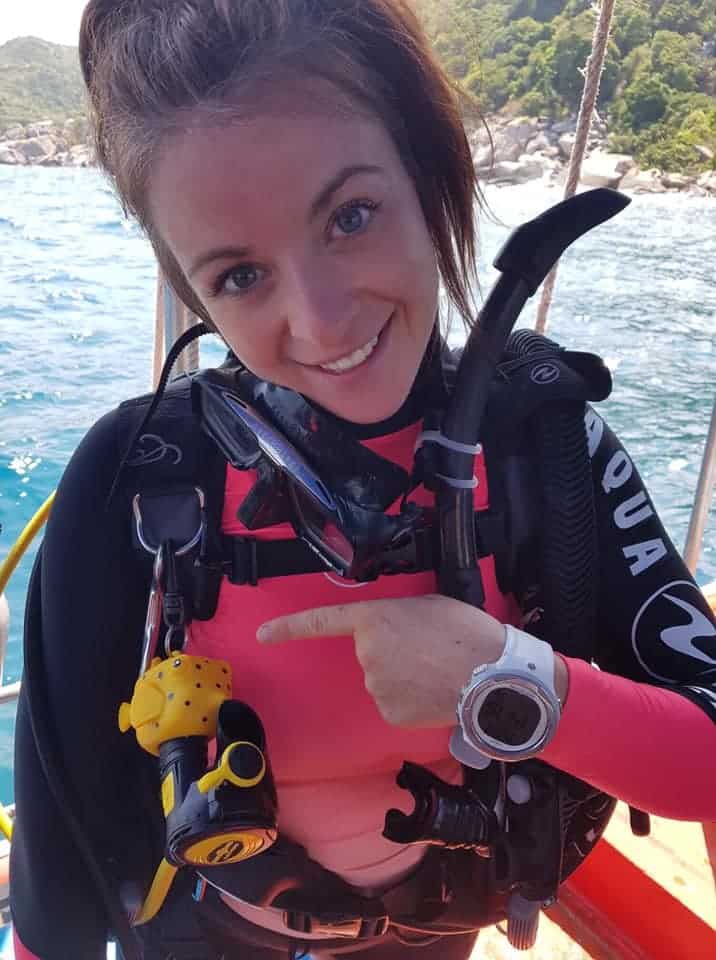I have been asked many times, by inquisitive children and nervous first time adult divers, what colours are sharks attracted to?
Interestingly enough, colour is not believed to be what causes sharks to become curious around swimmers, surfers and divers. It is the contrast of patterns, objects and shapes that could potentially attract sharks to investigate an area.
Table of Contents
What Colours Attract Sharks?
You could avoid wearing bright colours, but the stats and little evidence to this notion does not justify such an action.
To completely avoid wearing bright colours whilst in water seems like a silly thing to do when the risk of being attacked by a shark is ever so small. In fact, the risk of becoming separated from your group or your boat or lost at sea is much higher, and therefore wearing bright clothing would help make you visible.
According to Statista.com, in 2019 there were 64 unprovoked shark attacks on people. Two of these were fatal. To put it into context, more people die from falling coconuts, by drowning and from lightning strikes.
If you are still worried of that teeny-weeny chance of interacting with a shark, choose to wear darker wetsuits and fins and avoid contrasting patterns.
Sharks do not go out searching for humans to attack. In fact, the majority of those few shark attacks per year are a simple case of a confused shark testing the strange body that looks similar to a seal.
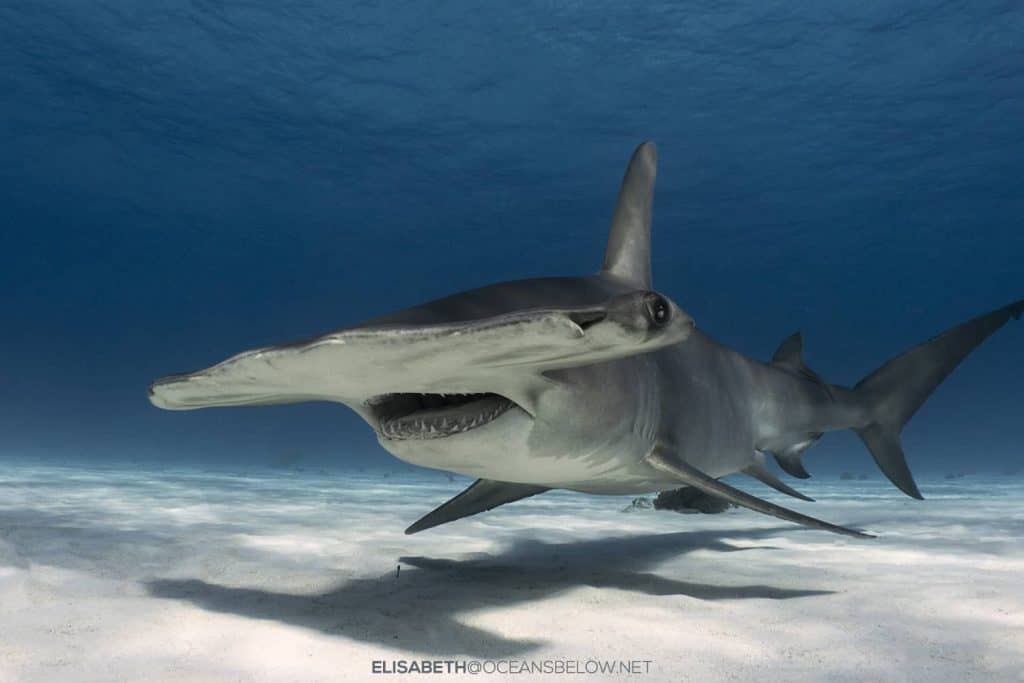
What Else Attracts Sharks?
It is believed that shiny objects such as jewellery can attract sharks. Many dive centres that take divers out to see sharks will recommend that you remove all jewellery before entering the water.
It is also recommended that you keep your dive computer under the cuff of your wetsuit to avoid any bright reflections. Sometimes sharks can mistake these flashes of light for the suns reflection off a fish scale.
Strong and quick movements can attract sharks too. Always remember to swim slowly and avoid splashing in shark hotspots.
Sharks as Super Predators
Sharks are known all over the world as a top predator, and they owe this to their well evolved sensory system. Their sight maybe the least effective of the sole senses, yet is used in combination with its other senses in order to effectively hunt its prey.
Unlike humans, sharks have 6 senses; vision, smell, taste, touch, hearing and electroreception. This sixth sense allows them to detect small electric fields that are generated by other organisms. This allows sharks to hunt for prey that may be hidden in the sand, where the other senses may not pick up.
Some sharks have good vision, whilst others have poor sight. It is believed that most sharks have quite a broad field of vision. Look at the Hammerhead shark for example, with the eyes placed in such a position that seems it has a 360 degree view.
Shark species that inhabit areas close to the oceans surface don’t necessarily need good vision, as the sunlight reaches their habitat. On the other hand, the deeper dwelling, benthic sharks have much larger eyes and better vision as is required due to the lack of sunlight reaching these depths.
Colours & Depths
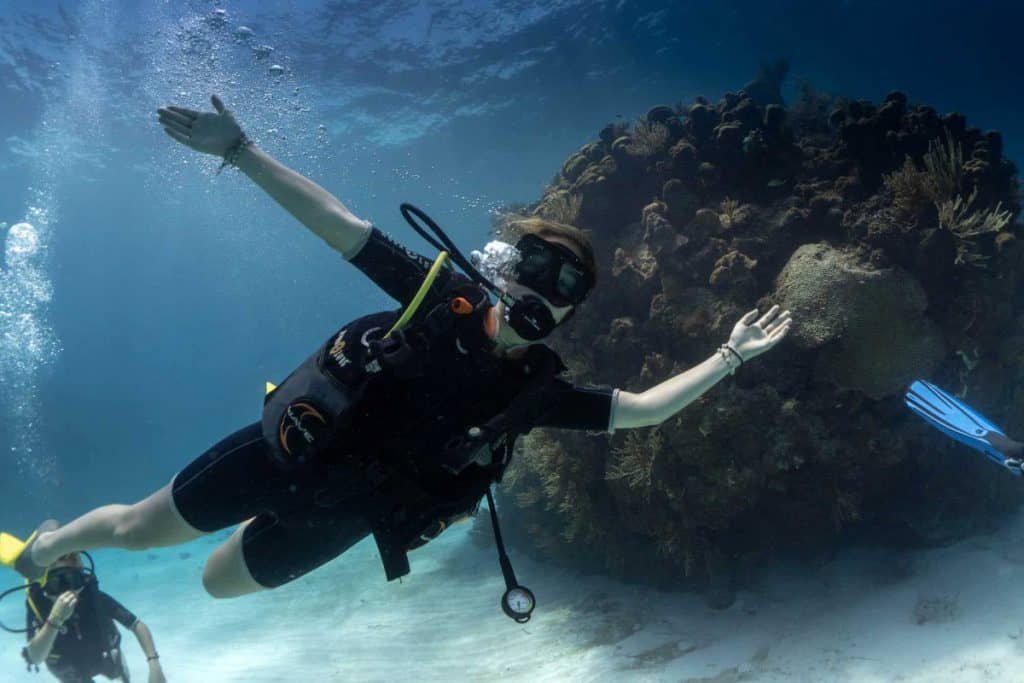
The human eye sees by collecting light reflected from an object and converting this energy into nerve impulses that are transmitted to the brain for interpretation. The behaviour of light changes as it passes through water which in turn effects how we see colours.
As we descend deeper, moving away from the oceans surface, we begin to loose the ability to see colours. Colours on the red end of the visible spectrum have less energy than those on the blue end and water will absorb the colours at the red end of the spectrum more rapidly than the blue end. This is why red is the first colour to disapear as we descend. Strictly speaking, it doesn’t disapear, it turns a slightly brownish colour.
Colour absorption is a continual process and this gradual filtering process effects the weaker wavelengths faster.
But what about sharks? Do they interpret colours like us?
The Research: What Colours Can Sharks See?
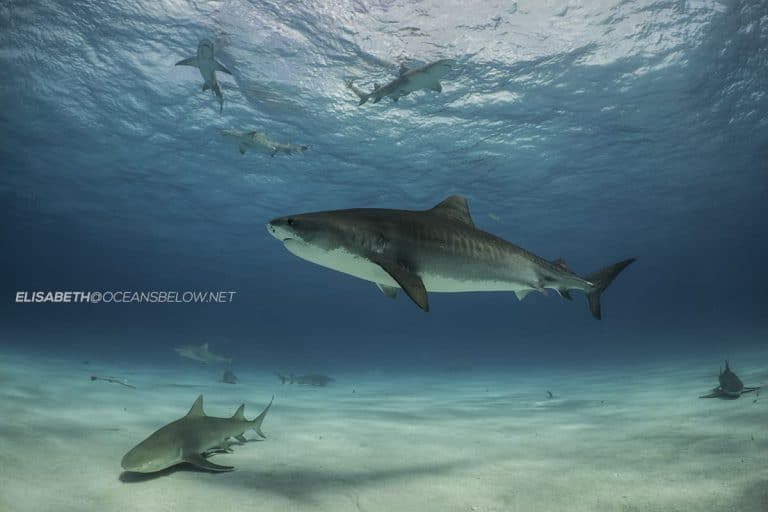
It had previously been believed that sharks could see colour, in particular yellow, and where the term “yum, yum yellow” coined from tests led by the US Navy.
In 2011, The University of Western Australia and The University of Queensland studied several Australian shark species and the potential for their vision to be in colour.
They discovered that sharks only have one cone type, compared to the three cone types that humans have which result in our sensitivity to blue, green and red light. These findings indicate that sharks cannot see colour.
The 2011 study showed that it wasn’t colour that mattered, but more contrast. These findings were used to encourage the design of long-line fishing lures that are not so attractive to sharks in order to reduce the amount of shark by catch caused by this industry.
Is It Safe To Dive With Sharks?
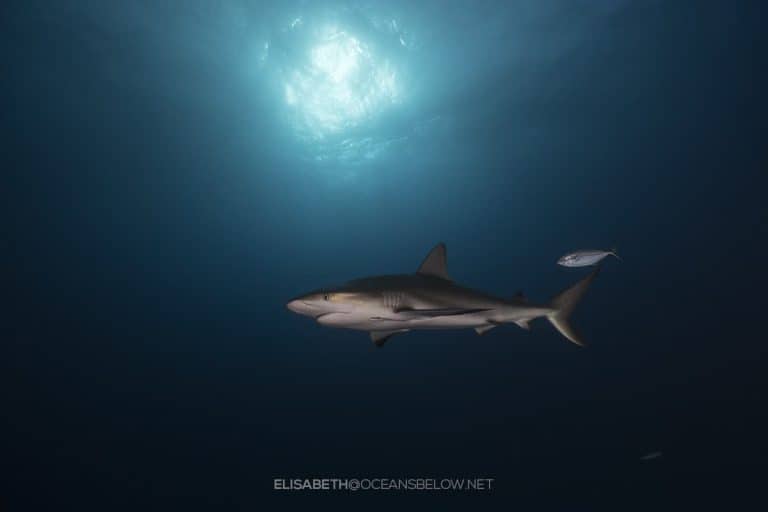
Diving with sharks is safe and you won’t need to take many precautions specifically to dive with sharks. Give them their distance and enjoy the experience.
The majority of shark species are very docile. I was lucky enough to work and dive with Black tip reef sharks every day for several months and not once did I feel threatened by their behaviour.
They are beautiful creatures to be close to and diving with sharks allows people to witness how special they are. However, never become content around any wild animal. They are still wild.
To learn more about how beneficial sharks can be in eco tourism, click here.
Here are several ways to ensure you keep your experience as safe as possible.
- Dive only with reputable shark-dive and eco-friendly operators.
- Understand local knowledge and procedures and ensure you are aware of safety procedures.
- Stay aware of body language (quick movements and dropping of the pectoral fins indicates a stressed animal).
- End the dive if the shark becomes too inquisitive or if their behaviour towards you has changed.
And remember, avoid contrasting colours but not at the expense of your safety equipment!
All photos used in this article are taken by Lis Lauwerys at Oceans Below. Find out more about how she has honed in on this amazing talent in my Q&A with her!

